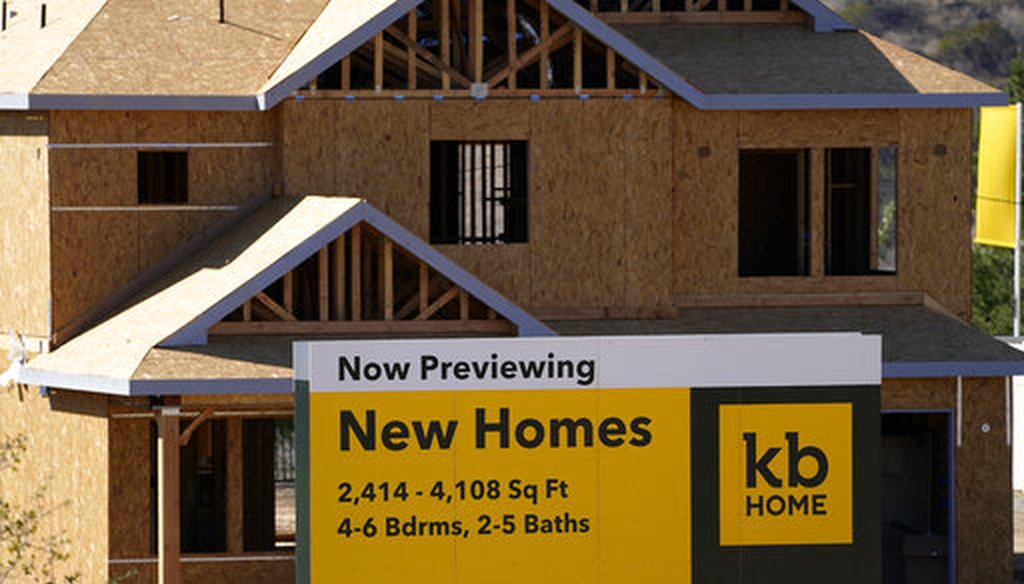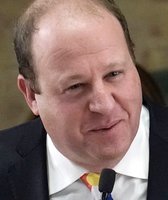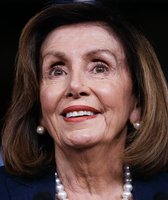Stand up for the facts!
Our only agenda is to publish the truth so you can be an informed participant in democracy.
We need your help.
I would like to contribute

There's strong demand for homes, but high lumber prices are limiting builders' ability to capitalize, analysts say. (AP)
If Your Time is short
• Economists say that most of the current rise in consumer prices stems from supply chains having to adjust quickly to greater economic activity after the pandemic.
• Some economists worry that President Joe Biden’s big-ticket spending proposals could drive a new wave of inflation by overheating the economy, but they’re not panicking yet.
• Most economists said the economy should be able to absorb the new government spending without triggering inflation, depending on how much of Biden’s proposed spending is enacted.
• Economists also expressed confidence that the Federal Reserve will closely watch inflation and act if needed.
Inflation — a phenomenon that most Americans haven’t had to think about much for a decade or two — has reemerged as a concern as the economy recovers from the coronavirus pandemic.
On May 12, the government announced that the consumer price index was 4.2% higher in April 2021 than a year earlier, the fastest increase since the Great Recession, more than a decade ago.
Driving up the inflation benchmark are higher prices for some of the basics of the family budget, including food, fuel and housing. Nationally, the average price of a gallon of gasoline has increased 59 cents, or nearly 24%, in the nearly four months since President Joe Biden took office. In the area around Scranton, Pa., where Biden was born, the average price is up almost 14 cents just in the past month. Staples like corn and chicken are up, too, as is lumber for home construction.
Economists generally agree that a small amount of inflation, around 2%, is inevitable, and even desirable because it tends to encourage consumer spending.
But once inflation hits sustained rates higher than 2%, the economic risks multiply. If prices rise but wages don’t, then workers suffer a hit to their purchasing power. Alternately, if wages rise too fast in response to price hikes, it could initiate a vicious cycle of runaway inflation, which can be devastating to an economy.
Even if that worst-case scenario doesn’t occur, inflation still eats away at the value of cash savings and fixed incomes. And even temporary price spikes can be politically damaging for the party in power. Voters tend not to care what the causes of inflation are, so any noticeable amount — especially for staples like gasoline and food — is a flashing alarm for elected officials.
Regardless of who gets the blame, prices for a given product can spike for a number of reasons. The spurt that’s hitting hardest right now is largely being driven by supply disruptions, as consumer demand rebounds from the worst of the coronavirus pandemic.
In the case of gasoline, experts say, it’s not Biden’s energy policies that are to blame but rather tight supplies that were driving prices up from January to April (before a May hacker attack shut down a key oil pipeline). After the pandemic depressed gasoline sales, oil producers have yet to ramp up enough to meet new demand for gasoline as Americans return to commuting and vacationing by car, said Patrick De Haan, head of petroleum analysis for GasBuddy.com.
"This would have happened if Trump was in office," De Haan said.
But even if the current inflation spike is being driven by transitory factors, some observers warn of a separate, longer-term factor that could continue to push prices up: the Biden administration’s multi-trillion-dollar agenda, which they say could juice economic growth so much that it triggers a new round of inflation.
Those warnings dovetail with Republicans’ near-universal opposition to Biden’s spending proposals.
"There’s so much money out there in the economy that the demand is high, and it’s outpacing supply and it’s starting to push prices up," Sen. John Thune, R-S.D., told Bloomberg. "We need to be a little more cautious and restrained."
When we asked a range of economists about the potential inflationary effect of Biden’s proposals, we found a degree of concern, but not panic. Most economists said there is some slack in the economy that can absorb the new government spending without triggering inflation. But they cautioned that the risks could be greater if Biden’s spending proposals are implemented fully, rather than in part.
In any case, they said they’re confident that the Federal Reserve is closely watching the inflation figures and will act if needed, by raising interest rates or reducing purchases of securities that have been under way since the pandemic began.
Today’s inflation rate 4.2% is high by recent standards, but nowhere near a record. Inflation in the United States peaked at 13.5% in 1980.
Since 1983, the annual inflation rate has never exceeded 5.4%, and it was often quite a bit lower than that. Since the Great Recession, which began in 2008, the annual inflation rate has never exceeded 3.1%.
In recent years, the Fed has aimed for an inflation target of around 2%, and the U.S. has generally hit that target.
The more recent price trends for a few basic commodities illustrate the ripple effect of the widespread business shutdowns that hit just a little over a year ago, and the resurgence of demand as vaccinations and declining COVID-19 case numbers promise a return to normal business activity.
Take plywood, which is used in home construction and remodeling. The price of 15/32" 3-ply Southern plywood was $1,525 per 1,000 square feet in the first week of May — nearly double the price when Biden took office, according to Fastmarkets RISI. Mills that shut down or reduced production during the throes of the pandemic in 2020 still haven’t caught up to increased demand, said Jennifer Coskren, a senior economist in the wood products group for the firm, which tracks the global forest products market.
Meanwhile, the price of "food at home" — basically, groceries — has risen during each of Biden’s first three full months in office: 0.3% in February, 0.1% in March and 0.4% in April, according to the Bureau of Labor Statistics’ latest Consumer Price Index summary.
In this case, the culprit is likely a combination of higher fuel prices and trucker shortages, the rebound from the pandemic, and the rising cost of plastic and aluminum containers, said Ben Brown, an agricultural and applied economics senior research associate at the University of Missouri.
The biggest increases tend to be for a few items in the volatile food and energy sectors. In fact, the rate of inflation for items outside those categories (the so-called core rate) was more modest in April, just 3%.
It’s also worth noting that the current inflation measures are skewed by the year-over-year comparison with April 2020, when the pandemic all but shuttered the economy and depressed prices across the board.
All in all, the peculiar transition to a post-pandemic economy has produced mismatches in supply and demand that are now driving the sharpest inflation. Economists expect these price increases to reverse once supply chains iron out delays and shortages.
"In a number of major sectors, like restaurants, hotels, car insurance and airfares, prices fell sharply during the pandemic," said Dean Baker, co-founder of the liberal Center for Economic and Policy Research. "These price declines will be reversed."
Some of the deeper fears about inflation, however, are being driven by Biden’s large-dollar domestic agenda items.
These include his $1.9 trillion American Rescue Plan, which is already law, as well as his proposals for a $2.65 trillion American Jobs Plan, which is sometimes called his infrastructure proposal, and his $1.8 trillion American Families Plan. (The latter two have not had any formal congressional action yet.)
With the deployment of vaccines helping to ease the COVID-19 crisis in the U.S., the economy grew at a 6.4% annual rate during the first quarter of 2021. Some economists worry that near-term government investment on a scale proposed by Biden could overheat the economy and promote inflation to levels not seen in decades.
The concern is that government spending could create such a hot economy, with too many job openings, that workers will have enough bargaining power to push up wages faster than their own productivity is growing. This could produce inflation.
So one key metric economists will be watching is the unemployment rate.
"If an economy is operating at less than full employment, then government spending can help expand the economy to ‘full employment’ without triggering inflation," said Lawrence White, an economist at New York University's Stern School of Business. "If deficit government spending persists at full employment, then inflation is likely to follow."
By that reasoning, some economists see a risk already in the Biden agenda.
The American Rescue Plan "is just way too large by any sensible measure," said Douglas Holtz-Eakin, president of the center-right American Action Forum, given that it came at the tail end of the pandemic when the economy was on the upswing. In March, job openings hit a new record — 8.1 million.
If Biden’s spending agenda is fully adopted, "we will see higher levels of inflation," predicted John S. Jahera Jr., a finance professor at Auburn University. "How much is uncertain, but in my opinion, we could well see inflation go up moderately to substantially."
Other economists aren’t so sure that Biden’s agenda will provoke systemic inflationary pressure.
For starters, we do not appear to be at "full employment" — a level that begins to push wages and prices higher. Historically, economists have figured full employment meant an unemployment rate around 4% or 5%. But in 2018 and 2019, the U.S. had an unemployment rate as low as 3.5% without triggering inflation.
In April 2021, by comparison, the unemployment rate was 6.1%. This gives some economists hope that the economy has enough "slack" to absorb the new government spending that Biden is proposing.
"Biden's agenda has an astounding amount of spending," said Tara Sinclair, a George Washington University economist. "But since we started with very low aggregate demand and inflation, I'm not too concerned about the impact of bills passed so far, though further spending without paying for it could be an issue."
Several other factors could provide additional cushions that help the economy absorb new federal spending without producing inflation, economists said.
One involves improvements in productivity — the ability of businesses to produce more with fewer workers. In 2020, labor productivity increased by 2.5%, the best showing since 2010.
This is important, Baker said, because "if we can sustain a 2.5% rate of productivity growth going forward, then we can accommodate considerably faster wage growth without causing inflation. It is certainly plausible that the pandemic has led companies to develop more efficient ways of operating."
Biden’s American Jobs Plan also includes a lot of funding for infrastructure — spending that should help increase productivity.
"Wise public infrastructure investment, broadly defined, will likely boost labor productivity directly," said Steve Fazzari, an economist at Washington University in St. Louis.
Another factor that could limit inflation is that Biden has proposed levying higher taxes to pay for the two proposals that have not yet been passed. Higher taxes tend to cool the economy down, counteracting the overheating effect of new spending.
If Biden pays for his spending plans with an equivalent amount of new taxes, the risk of a long-term increase in the rate of inflation may be modest, said Gary Burtless, an economist with the Brookings Institution. However, he and other experts warned that Congress might oppose tax increases for political reasons, which would limit their cooling effect on the economy.
It’s also important to remember that Biden would not spend all the money in his bills at once; significant portions would be spent over the next eight years, which should also reduce the inflationary pressure.
"Even if Congress were to pass his bills tomorrow, almost no money will go out the door this year and not very much next year," Baker said. Measured over eight years, he said, they are around 1.6% of GDP. "That's not trivial, but not likely to create a problem with inflation."
The primary inflation fighter, as always, will be the Federal Reserve, which is independent of the Biden administration.
The Fed’s most familiar tool in fighting inflation is to raise the interest rates it has control over. This action tends to bump up even the interest rates the Fed doesn’t control, such as mortgage or credit card rates, effectively cooling economic growth and inflationary pressures.
However, Fed Chairman Jerome Powell has indicated that the Fed will tolerate inflation beyond the longstanding 2% target, at least for a while.
"With inflation running persistently below this longer-run goal, the committee will aim to achieve inflation moderately above 2% for some time so that inflation averages 2% over time, and longer‑term inflation expectations remain well anchored at 2%," the Fed said in a March statement.
"I think the Fed is really going to wait to see actual inflation numbers above their target, not just forecasts of future inflation, before really tapping the brakes," Sinclair said.
Indeed, raising interest rates may not even be the Fed’s first move if it sees an inkling of inflation. It could also wind down the purchases of Treasury securities and mortgage-backed assets that it has been making since the pandemic and the resulting economic downturn began.
Fazzari acknowledges uncertainty in economists’ assessment of how big the risk of further inflation will be.
"Given the size of the federal government’s fiscal responses to the pandemic, there is more risk of inflation than has been the case in recent decades," he said. "But there is also a risk of doing too little, leaving our labor and capital resources underemployed and, as a result, losing incomes the economy could have created. I believe the Biden administration has been correct to go big with pandemic rescue policies."
Our Sources
Federal Reserve Bank of St. Louis, "Inflation, consumer prices for the United States," accessed May 12, 2021
U.S. Bureau of Labor Statistics, "Average Retail Food and Energy Prices, U.S. and Midwest Region," accessed May 11, 2021
U.S. Bureau of Labor Statistics, "Consumer Price Index Summary," May 12, 2021
U.S. Energy Administration, "Weekly U.S. All Grades All Formulations Retail Gasoline Prices (Dollars per Gallon)," accessed May 10, 2021
U.S. Department Of Agriculture Economic Research Service, "Summary Findings — Food Price Outlook, 2021," April 23, 2021
U.S. Bureau of Economic Analysis, "Gross Domestic Product, First Quarter 2021," April 29, 2021
Federal Reserve Bank of St. Louis, "Private Nonfarm Business Sector: Labor Productivity," accessed May 12, 2021
Federal Reserve Board, "Federal Reserve issues FOMC statement," March 17, 2021
Douglas Holtz-Eakin, "Inflation Watch" (blog post), April 29, 2021
American Automobile Association, "Gas prices — Scranton-Wilkes Barre-Hazleton," accessed May 11, 2021
Bloomberg, "Inflation Surge Tees Up Political Peril for Biden Spending Plans," May 12, 2021
Washington Post, "Consumer prices rise in April, stoking worries about an overheating economy," May 12, 2021
Washington Post, "Recovery’s stumbles leave Americans confronting unfamiliar inflation risk," May 10, 2021
Henry Olsen, "Biden officials are playing down the risk of inflation. Don’t believe them" (Washington Post column), May 7, 2021
New York Times, "A Fed gauge of inflation expectations ticks higher, but only in the near-term," May 10, 2021
USA Today, "Fact check: COVID-19 to blame for spike in lumber prices, not Biden," April 29, 2021
Wall Street Journal, "U.S. Job Openings Reach Record as Hiring Slows," May 11, 2021
PolitiFact, "No, the price of gas isn’t up 50 cents, price of food isn’t up 10% under Biden," March 10, 2021
PolitiFact, "Are gas prices going up? And is it Joe Biden’s fault?", March 2, 2021
PolitiFact, "Yes, the price of plywood is up in the range of 252%, with market factors to blame," April 15, 2021
Interview with Patrick De Haan, head of petroleum analysis, GasBuddy.com, May 12, 2021
Email interview with Ben Brown, agricultural and applied economics senior research associate, University of Missouri, May 11, 2021
Email interview with Henry Olsen, senior fellow at the Ethics and Public Policy Center, May 11, 2021
Email interview with Jayson Lusk, distinguished professor and head of the Department of Agricultural Economics at Purdue University, May 11, 2021
Email interview with Jennifer Coskren, senior economist in the wood products group at Fastmarkets RISI, May 11, 2021
Email interview with Gary Burtless, economist with the Brookings Institution, May 7, 2021
Email interview with Lawrence White, economist at New York University's Stern School of Business, May 7, 2021
Interview with Douglas Holtz-Eakin, president of the American Action Forum, May 7, 2021
Email interview with Tara Sinclair, George Washington University economist, May 7, 2021
Email interview with Steve Fazzari, economist at Washington University in St. Louis, May 7, 2021
Email interview with Adam S. Hersh, visiting economist at the Economic Policy Institute, May 7, 2021
Email interview with Robert E. Scott, senior economist with the Economic Policy Institute, May 7, 2021
Email interview with Roger Noll, emeritus professor of economics at Stanford University, May 7, 2021
Email interview with Daniel Mitchell, libertarian economist, May 10, 2021
Email interview with John S. Jahera Jr. emeritus finance professor at Auburn University, May 7, 2021
Email interview with Dean Baker, senior economist with the Center for Economic and Policy Research, May 7, 2021

































